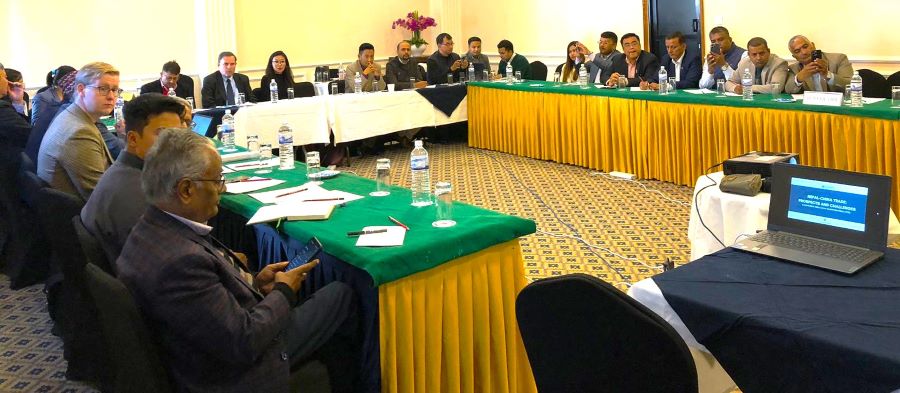With significant disruptions to cross-border trade between Nepal and China stemming from the 2015 earthquake and the global COVID-19 pandemic, Nepal’s trade with China is yet to return to normal.
The specific challenges arising from the sanitary and phytosanitary (SPS) measures impacting Nepali products require prompt attention, as do the specific issues surrounding transportation, connectivity, and logistical aspects, in both exports and imports.
This agenda was put forth during a roundtable discussion titled “Nepal-China Trade: Prospects and Challenges,” organized today by South Asia Watch on Trade, Economics, and Environment (SAWTEE).
The discussion programme supported by The Asia Foundation was centred on the trade relationship between Nepal and China, examining the challenges within the overall trade ecosystem that have contributed to the lacklustre export performance, said the press release of the SAWTEE.
Nepal-China Trade, between 2020 and 2022, over 90 percent of the value of goods exported to China from Nepal were covered by the zero-duty list for the least developed countries (LDCs), but the utilization of preferences averaged 68 percent, said a SAWTEE study.
At the programme, Joint-Secretary at the Ministry of Industry, Commerce and Supplies (MOICS), Government of Nepal Ram Chandra Tiwari said that Nepal’s incentive structure doesn’t place enough emphasis on supporting entrepreneurship, startups, and the overall industrial ecosystem, leading to a lackluster export performance.
“the three-tiered structure of government under federalism has diminished collaboration between the different levels of government, resulting in ineffective resource utilization and subpar export performance,” he stressed.
Under Secretary at the MOICS Achyut Dhungana informed that four key factors– infrastructure and logistics, the negotiation and execution of trade agreements, market access, and the facilitation of cross-border payments– should be considered for enhancing trade with China
Dhungana also informed that a meeting has already been held to discuss the review and amendment of the trade and payment agreement signed between the MOICS and the Chinese Ministry of Commerce to enhance bilateral trade relations.
Former Secretary of the Government of Nepal Ms. Bindra Hada highlighted the longstanding history of bilateral trade relations between the two countries.
Former Joint Secretary at the MOICS, Rabi Shanker Sainju said that Nepal’s trade with China is adversely affected by the high transportation costs resulting from its inadequate logistics infrastructure.
With the evolution of the landscape of the Chinese consumer market, demand for high-quality products has increased, and this must be taken into account when looking to boost exports to China, he added.
Chairman, Nepal Trans Himalaya Border Commerce Association Ashok Kumar Shrestha emphasized the need for enhancing trust between stakeholders (public and private sectors) of the two countries, in addition to improving infrastructure, logistics, and connectivity, to build trust to give a boost to Nepal-China trade ties.
Highlighting the need for meeting phytosanitary requirements for the export of Nepali products to China, Shrestha suggested establishing a multifunctional quarantine laboratory.
“Although China stands as Nepal’s second-largest trading partner, the trade balance has distinctly favoured China,” said Research Officer of SAWTEE Rupesh Tha during his presentation at the programme.
“it is vital for Nepal to fully harness the advantages of zero-tariff treatment provided to over 8,000 products originating in Nepal and diversify its exports to China, he lauded stressing on the current bilateral agreements, such as the trade and payment agreement 1981, are outdated and ill-suited to the present circumstances and need to be reviewed.
This is particularly pertinent as Nepal grapples with a significant trade deficit with China, he further added.
Participants at the programme were among others included trade experts, policymakers, and representatives from the private sector drew attention to evaluate the trade consequences for Nepal following its graduation from the LDC category in 2026.

They further suggested that studies on Nepal-China trade should also look into the impact on trade with China and the existing tariff benefits provided by China, and explore alternative trade agreements and provisions to safeguard Nepal’s trade with China in the years after graduation.









